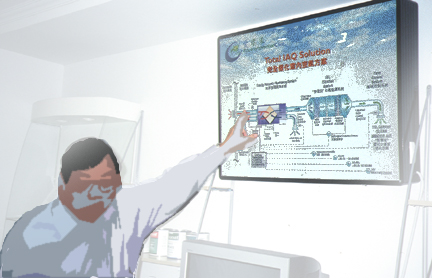Pollution a problem in classrooms

Environmental Care Limited carried out tests of indoor air quality in about 20 secondary schools this year.
Prof. S.C. Chan, managing director of Environmental Care, said, “The results show that there is a need to improve the indoor air quality in schools right now.”
According to the report, the air quality is worst in schools with two air conditioners, but no exhaust fans, in classrooms.
The carbon dioxide concentration in these schools was higher than 4,000 parts per million. This value exceeds a basic standard set by the Environmental Protection Department by four times.
The indoor air quality objectives set by the Environmnetal Protection Department divide indoor air quality objectives into two levels.
Level I calls for a maximum carbon dioxide concentration of 800 parts per million. A high-class and comfortable building should achieve this level.
Level II calls for a maximum carbon dioxide concentration of 1,000 parts per million. This provides minimal protection to the public.
“Poor air quality affects students’ desire and ability to learn, and it obviously affects the health of students directly,” said Prof. Chan.
Long-time exposure to indoor pollutants like formaldehyde and radon can cause respiratory tract irritation and increase the probability of developing respi ratory diseases or lung cancer.
The government, however, is doing little to deal with the problem.
Tommy K.W. Chan is a senior environmental protection officer at the Environmental Protection Department in Hong Kong.
“We do not know whether the problem of indoor air pollution in schools is serious or not because we have not done any research about that,” he said.
The department is going to launch a voluntary indoor air quality certification scheme to improve the indoor air quality of offices, government buildings and public places like shopping malls and restaurants. However, schools are not involved in this scheme.
Mr. Chan said, “We do not have any specific policies targeting problems in schools because most schools are using room conditioners, but our projects are only designed for central air conditioning systems.”
Since the government has not done much to improve the indoor air quality of schools, academic institutions have to solve the problem by themselves.
Jane Or is principal of Holy Trinity College in Shek Kip Mei.
“The indoor pollution problem is the most serious during autumn,” said Mrs. Or.
“Therefore, I ask students to switch off the air conditioners and open the windows when the temperature is below 20 degrees.
“This move not only saves energy, but also makes the ventilation better,” said she.
“Besides, I ask those students who suffer from severe nasal problems to leave the classrooms during recess and lunch breaks.”
Mrs. Or said that there has been no special guidelines or advice from the government to help schools improve the quality of indoor air.
However, she said that this is not only the responsibility of the government.
“Schools should pay attention to their management work. In order to maintain good ventilation, schools should check and clean the air conditioners regularly.”
Apart from secondary schools, universities are also taking the initiative to solve this problem.
The Campus Development Office at The Chinese University of Hong Kong is responsible for the improvement of indoor air quality on campus.
Norman T.K. Yip, senior engineer at the Campus Development Office, said, “Since 1990, the office has started to pay attention to the air quality in classrooms, lecture theatres, laboratory buildings and academic buildings.”
“It has replaced the old air conditioners that do not supply enough fresh air, and it instituted regular maintenance.
“At this moment, our office is carrying out a project to measure the indoor air quality in different areas on the campus,” he said.
Based on findings that will be released at the end of this year, the office will make some improvements, such as cleaning air conditioning filters and renewing some of their parts.
“In order to improve the indoor air quality, cooperation from all sectors in society is needed,” said Mr. Yip.